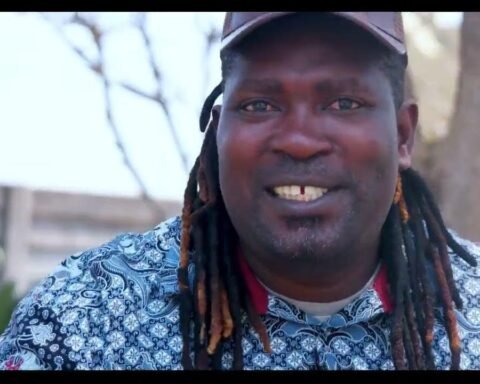Harare ‑ In one voice, Zimbabwe spoke: “President Robert Mugabe must go, and must go now.”
The military intervention earlier in the week has emboldened the citizenry who have grown increasingly confident in stating that Mugabe has overstayed his welcome.

Regardless of creed, political affiliation, race, colour, or anything else, Zimbabweans marched as one towards State House calling for the resignation of Mugabe from both the ruling Zanu PF party and government.

The beginning of the momentous rumblings in the southern African nation came on Wednesday night when the Zimbabwe Defence Forces (ZDF) did what no one would have ever thought.
They went after all the “criminals surrounding Mugabe”, and in the process, confined the Zimbabwean leader at his Blue Roof mansion in the posh Borrowdale suburb, which is said to have one of the most advanced radar security systems.
They put in custody finance and economic development minister Ignatius Chombo, who is also Zanu PF secretary for administration, Masvingo Provincial Affairs minister Paul Chimedza, Central Intelligence Organisation deputy director Albert Ngulube, Zanu PF youth league leader Kudzanayi Chipanga, and confined Police Commissioner-General Augustine Chihuri, local government minister Saviour Kasukuwere, who is also Zanu PF national political commissar, as well as higher and tertiary education minister Jonathan Moyo.
ZDF Major General Sibusiso Moyo announced live on ZBC-TV, the State broadcaster as well as on all radio stations, that Mugabe was safe and protected.
Mugabe complained to South African President Jacob Zuma that he was “confined” at his mansion.
Zuma immediately despatched a two-member team which included defence and military veterans minister Nosiviwe Mapisa-Nqakula and State Security minister Bongani Bongo to meet Mugabe and the Zimbabwe Defence Forces.

Meanwhile, the SADC Organ Troika met in Botswana on Thursday, where they condemned the “coup”.
But back home in Zimbabwe, the military insisted that it was not a coup, but a military step-in and they would return to the barracks once they had achieved their mission.
During negotiations at State House on Thursday, Mugabe initially agreed to step down, but the challenge was that he did not want sacked Vice-President Emmerson Mnangagwa to take over, despite the military insisting they wanted no one else but Mnangagwa, who is nicknamed Ngwena (crocodile).
In order to avoid international pressure, the military put pressure on Zanu PF to quickly convene provincial co-ordinating committee meetings where they would denounce Mugabe and his wife, First Lady Grace, and pass votes of no-confidence against them.
By end of day Friday, all provinces had done so Mugabe was supposed to go. At the same time, a rally and march to State House was also being planned for Saturday.

And so it happened, with thousands of people converging in the central business district, as well as at Zimbabwe Grounds in Highfield, a high-density suburb.
It was a sea of people at Zimbabwe Grounds, the same venue used by Mugabe on April 18, 1980, where he addressed hundreds of thousands of people that the country had attained independence., It was also the site where the Union Jack flag was taken down and the Zimbabwean one hoisted.

The influential war veterans, political parties, civic society leaders and activists chanted slogans and called for Mugabe to go.
Motorists honked, kombi drivers spun their cars joyously in the streets and others sang songs, many of them derogatory.
Popular musician Jah Prayzah’s two songs ‑ Kutonga Kwaro and Ndini Ndamubata ‑ played in most, if not all cars. Kutonga Kwaro, from the album Kutonga Kwaro, which was released mid-October, is a song which speaks about a leader taking over.








